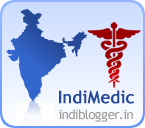
 September 19-20-21 was a educational weekend at the science center. With the inauguration of Exhibition of Medicinal Plants By Vaidya Choodamani Raghuveer alias Pramod P. Bhide, from Ratnagiri, , Shri Vishwanath Joshi, Director Goa Science Centre, , Shri Arjun Halarnkar, Project Manager, International Centre Goa,
September 19-20-21 was a educational weekend at the science center. With the inauguration of Exhibition of Medicinal Plants By Vaidya Choodamani Raghuveer alias Pramod P. Bhide, from Ratnagiri, , Shri Vishwanath Joshi, Director Goa Science Centre, , Shri Arjun Halarnkar, Project Manager, International Centre Goa,The exercise was to introduce the public to the concepts of Ayurveda and to reach out the people. We also looked at presenting Ayurveda as an career opportunity and give the glimpse of the college to the students. Of 11th and 12th standard.
The sessions commenced on 19th with the key note talk by sri Rajendra Kerkar an environmental educationist. Followed by a birds view of the growth of the Ayurvedic college at Shiroda, presented by Dr.Neelesh Korde.
On 20th was an open house the argumentative Indian made his presence felt, it was an interactive sessions between the various streams of medicine with Vaidya Bhide and Dr.Suraj Kanekar chairing the sessions
 Dada vaidya, has the unique privilege of being the only Hindu vaidya who was honored by the Portuguese his statue wascarved at Portugal and place at Ponda for the gentleman in dhoti and non presumptuous herbs had cured the viceroy’s son who was declared incurable by the Portuguese doctors. This historic event was discussed in totality by and goans were made aware of their unique heritage by Dr.Prajal sakhardande and Vaidya Jayant Gosai from Sattara. This event also commemorated dada vaidya’s 150th birth anniversary .A book on Ayurveda and milestone's in it journey was released to commemorate the event.Raj vaidya the grandson on Dada vaidya graced the occasion
Dada vaidya, has the unique privilege of being the only Hindu vaidya who was honored by the Portuguese his statue wascarved at Portugal and place at Ponda for the gentleman in dhoti and non presumptuous herbs had cured the viceroy’s son who was declared incurable by the Portuguese doctors. This historic event was discussed in totality by and goans were made aware of their unique heritage by Dr.Prajal sakhardande and Vaidya Jayant Gosai from Sattara. This event also commemorated dada vaidya’s 150th birth anniversary .A book on Ayurveda and milestone's in it journey was released to commemorate the event.Raj vaidya the grandson on Dada vaidya graced the occasionfuture was the focus of 21st we had an career option presentation by the college for 11th and 12th standard students.
Dr.Anura Bhale made the public aware of what was prakriti, what was dosha and what role it played on the people’s health. She also did prakriti pareekshan or examination of those who were interested and counseled them on balancing their food and exercise regime.
The session concluded with the Art of Living practitioners giving their input on Ayurveda and health.
The high lights of the three days, were the presence of the ethnic folk healer Ram Shanker Gavalikar who learnt the art of finding medicinal roots and herbs in the forest and using them for treatment from his mother and grandmother.
Dr.Archana Gaonkar had contributed 3 precious days from clinic to render free consultation for the participants.
Dr.Anura Bhale made the public aware of what was prakriti, what was dosha and what role it played on the people’s health. She also did prakriti pareekshan or examination of those who were interested and counseled them on balancing their food and exercise regime.
The session concluded with the Art of Living practitioners giving their input on Ayurveda and health.
The high lights of the three days, were the presence of the ethnic folk healer Ram Shanker Gavalikar who learnt the art of finding medicinal roots and herbs in the forest and using them for treatment from his mother and grandmother.
Dr.Archana Gaonkar had contributed 3 precious days from clinic to render free consultation for the participants.

